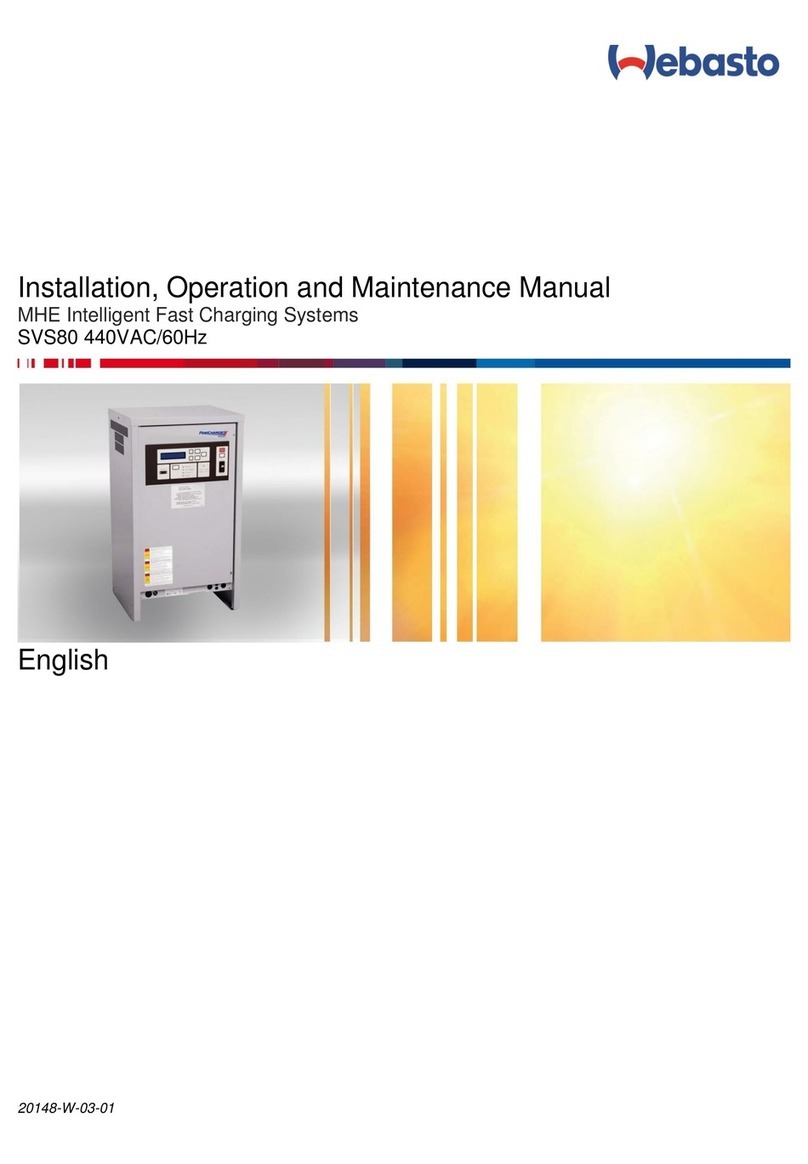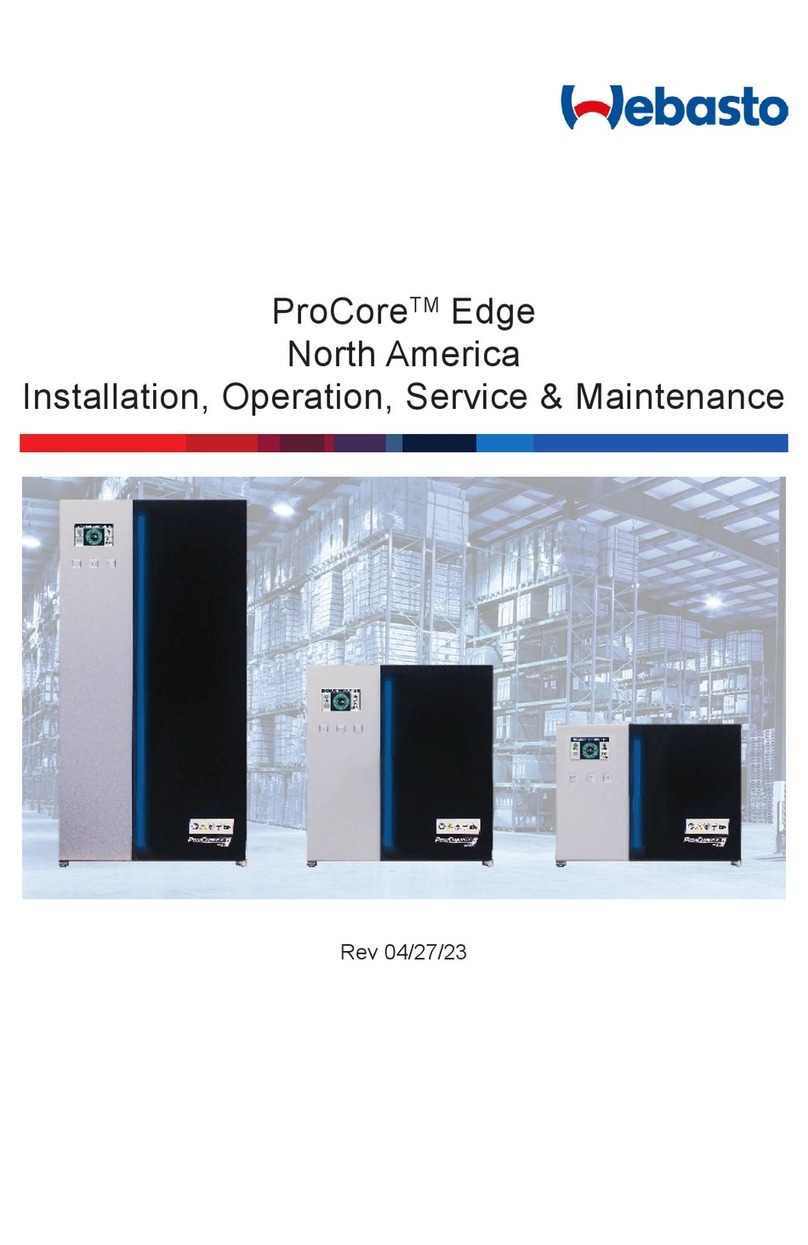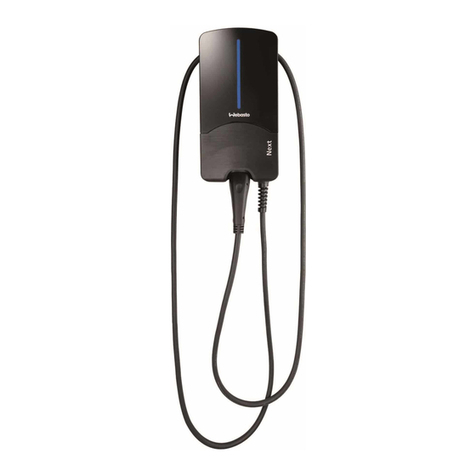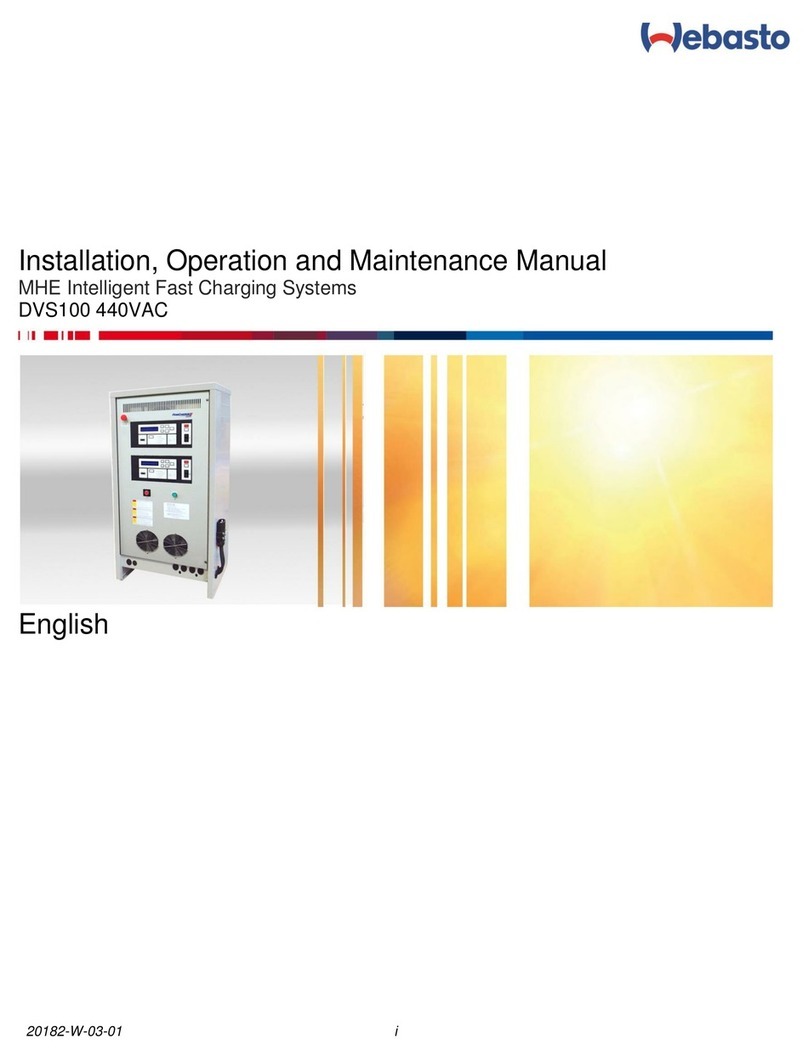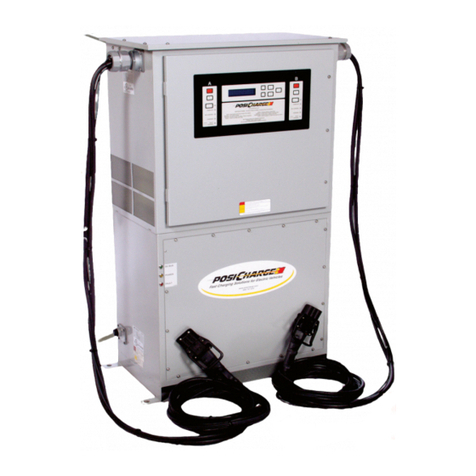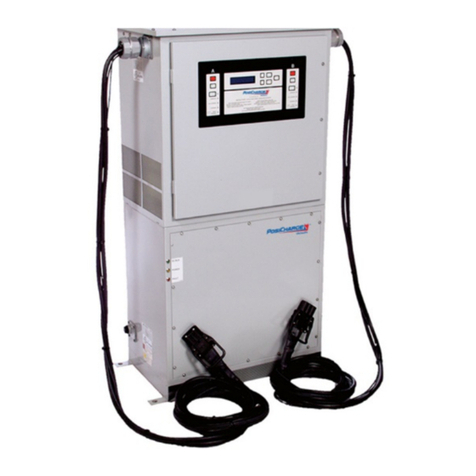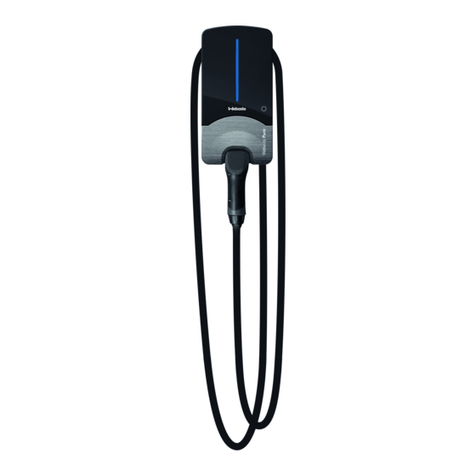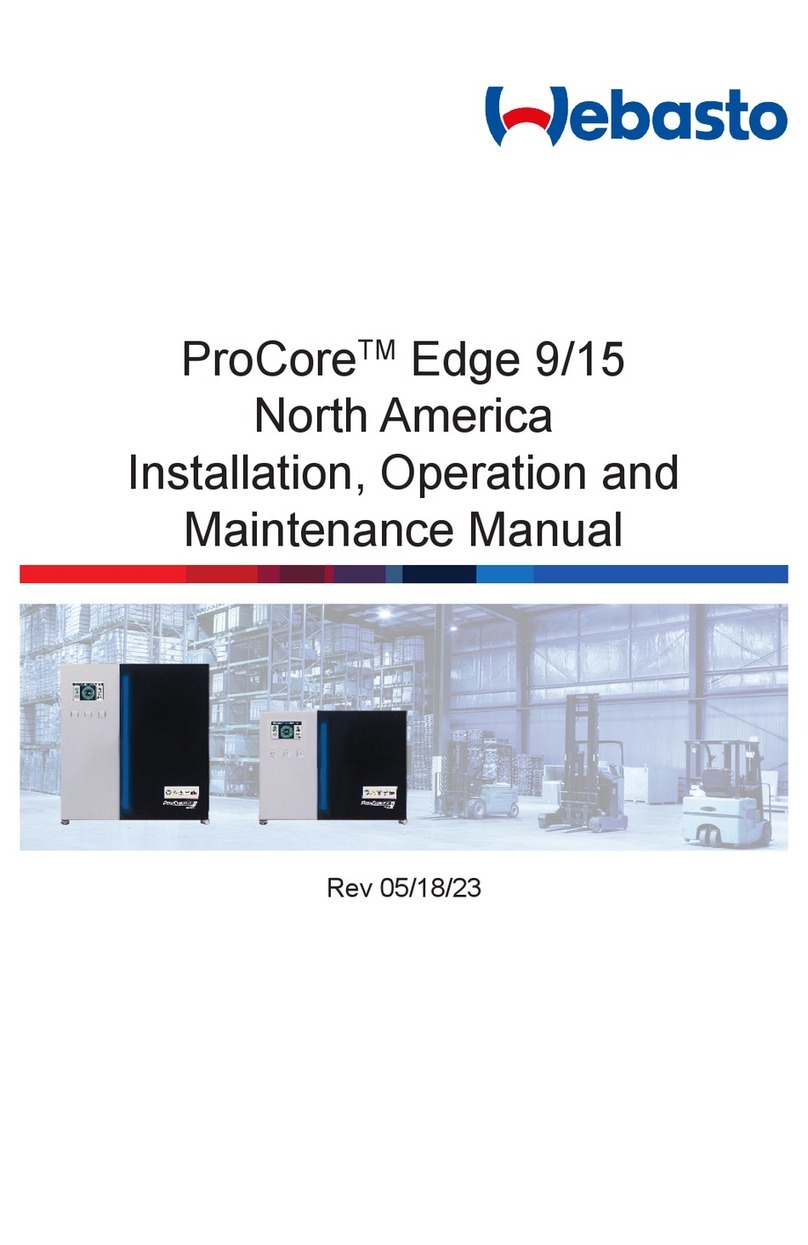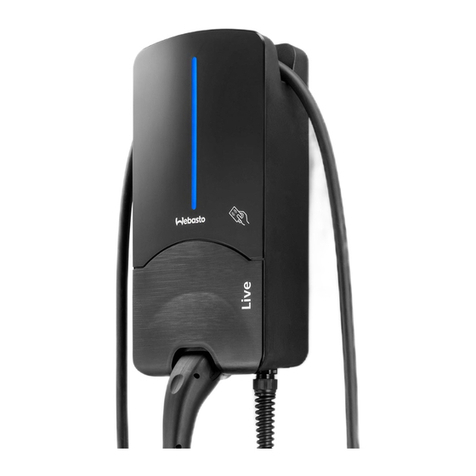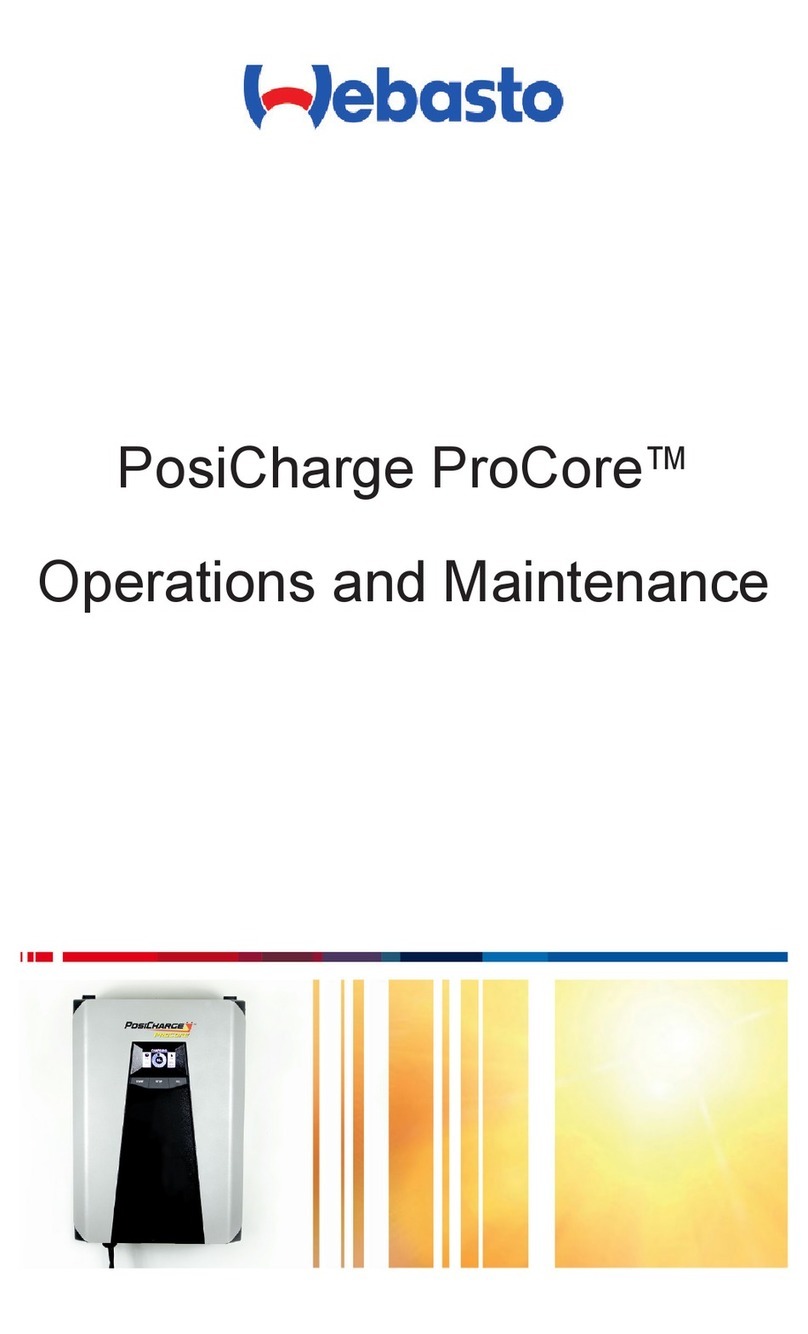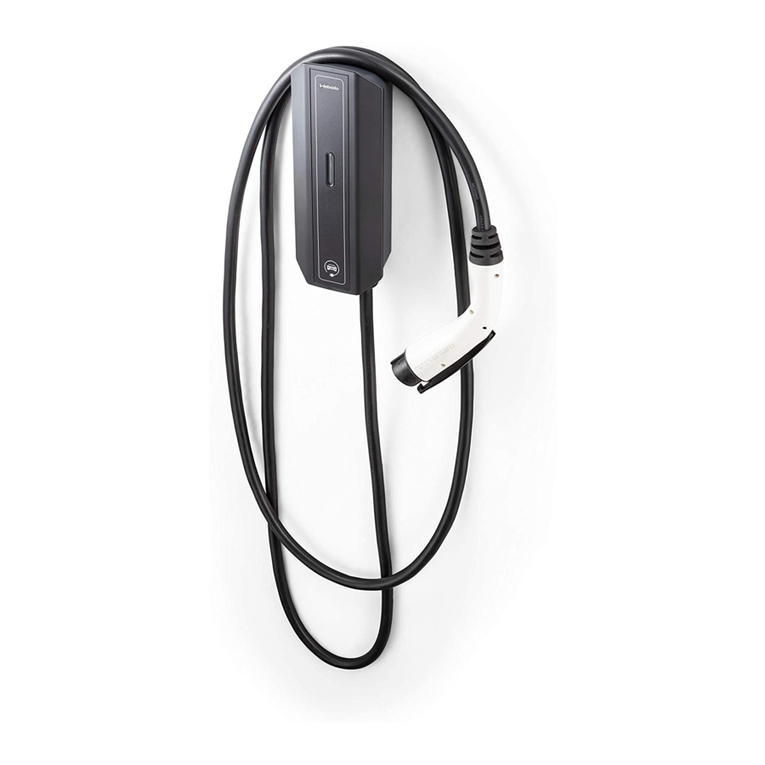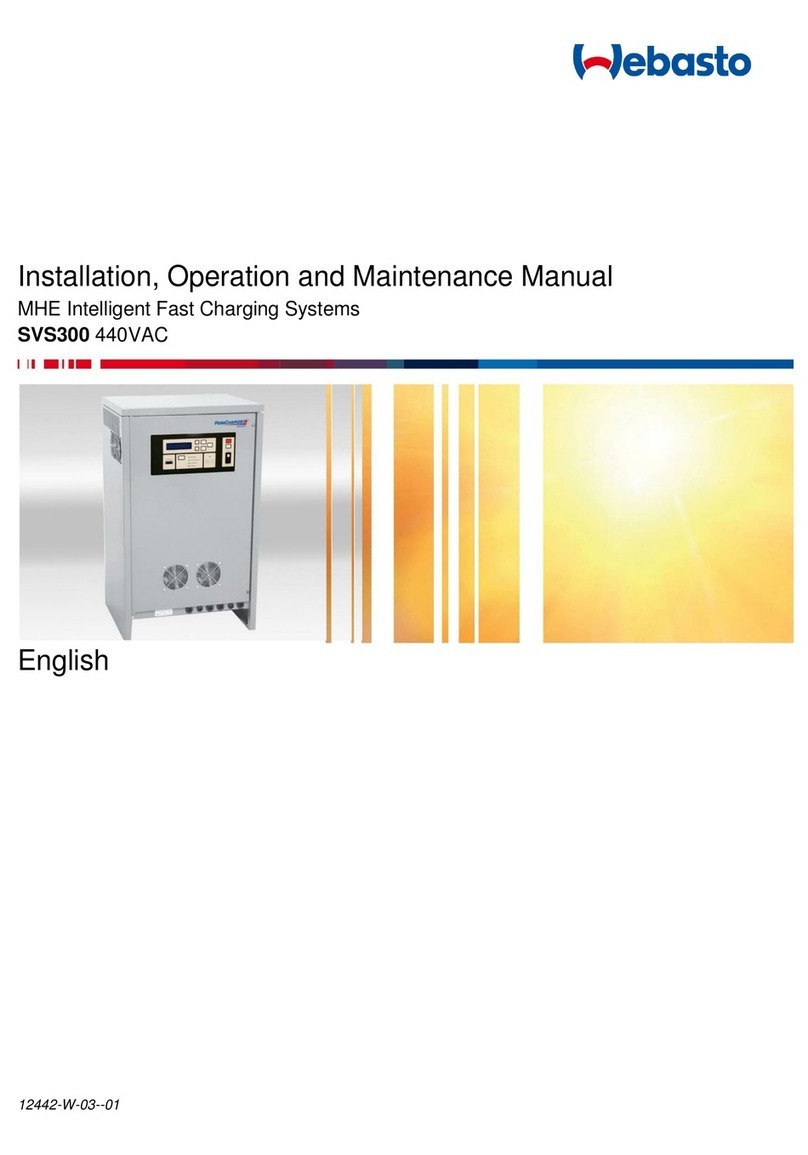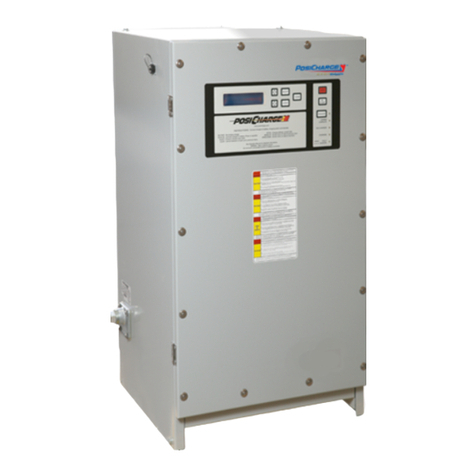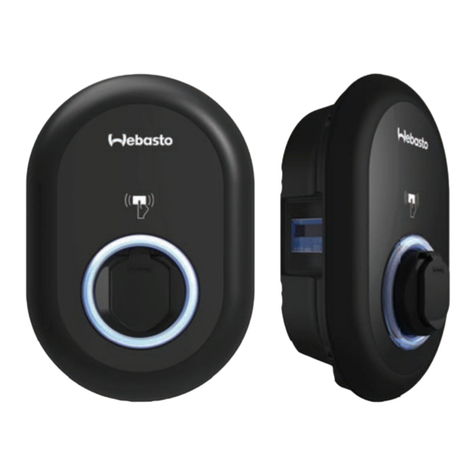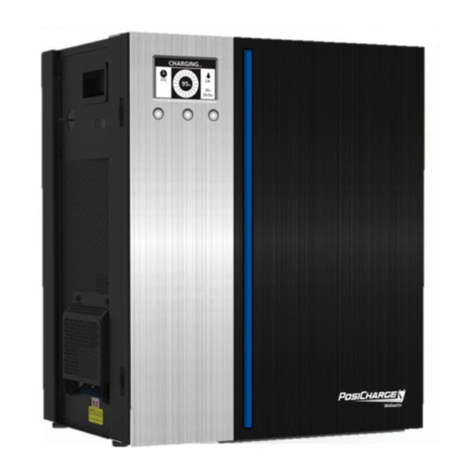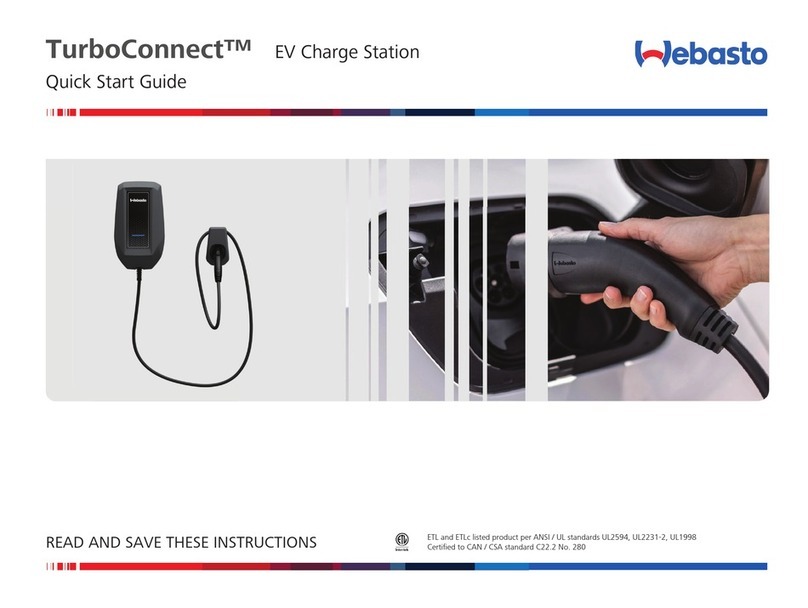
12284-W-76-CEC-01 5 Webasto Charging Systems, Inc.
•Disconnect battery charger from input power and battery connections before installing or servicing. Lockout/Tagout input
power according to OSHA 29 CFR 1910.147.
•Do not expose to rain or perform installation/service/repair work when in standing water.
•A charge can be stopped by disconnecting the output cable connector or by pressing the stop button on the front panel. The
DVS is designed to automatically stop a charge event to prevent arcing or burning of the charger connections in the event of
a hot disconnect.
•The charging cables must be sized for the full rated current of the DVS, and inspected frequently for wear, cuts and
abrasion. Do not use worn, damaged, undersized, or poorly spliced cable.
•The DVS charging connector is subject to normal wear and tear, and may be damaged by misuse or abuse. Frequently
inspect the connector for cracking, pitting of contacts, fraying of wires, or signs of connector fatigue. A damaged charging
connector should be replaced immediately.
WARNING
OSHA INSTRUCTION STD 1-11.4
OCTOBER 30, 1978
4. Action
“Battery charging” areas where power industrial truck batteries are charged only—no maintenance
is performed, batteries are not removed from the trucks and no electrolyte is present in the area—
are not subject to the requirements of 29 CFR 1910.178 (g) (2). The charging areas shall be in
compliance with 29 CFR 1910.178 (g) (1), (8), (9), (10), (11) and (12). Personal protective
equipment shall be used when and where required.
•Do not install or place unit on, over or near combustible surfaces.
•Do not install unit near flammables.
•Do not block air intake or exhaust.
•Ensure that the Battery Monitor/Identifier (BMID) is properly installed according to the BMID installation instructions.
•Do not overload building wiring - be sure power supply system is properly sized, rated and protected to handle this unit.
Use only on circuits provided with the minimum wire size specified in the installation section.
•Protective bollards or Armco barriers should be installed where charging equipment location is subject to damage from
vehicle activity.
•Do not install unit where it will be exposed to direct sunlight.
•To avoid shock hazard, only install cables approved by PosiCharge™for indoor use.
•Do not subject the cable or coupler to damage or stress. Do not step on the coupler cable.
•Do not hang from the coupler cable.
•Do not disassemble the DVS.
•Follow the National Electrical Code (NEC) and local codes. NEC and local codes take precedence. If any instructions in
this manual conflict with NEC or local codes, contact Webasto Charging Systems, Inc. for further information.
2.3 Technical Support
This manual is intended to provide an authorized, fully trained installation technician with the information and guidance
necessary to safely install the DVS equipment. For assistance contact PosiCharge™ Customer Support at:
(866) 767-4242
E-mail: info@posicharge.com
2.4 List of Webasto-Provided Equipment
DVS 1 DVS100 480/600VAC
DVS150 480/600VAC
One of these
Products
Cable, Assy, BMID Comm 2 Contact Tech Support Optional
Kit, Installation, BMID, MVS/DVS/ELT, EURO, W/Connector 2 Contact Tech Support Optional
Assy, BMID, 24V, 36-48V, 72-80V, Generic, UL 2 Contact Tech Support Optional
Cable Management Pole Assy (48”) 2 07233 Optional
Cable Management Pole (48”) and Pogo Stick 2 09258 Optional
Cable Management Pole (40”) and Pogo Stick 2 11752 Optional
